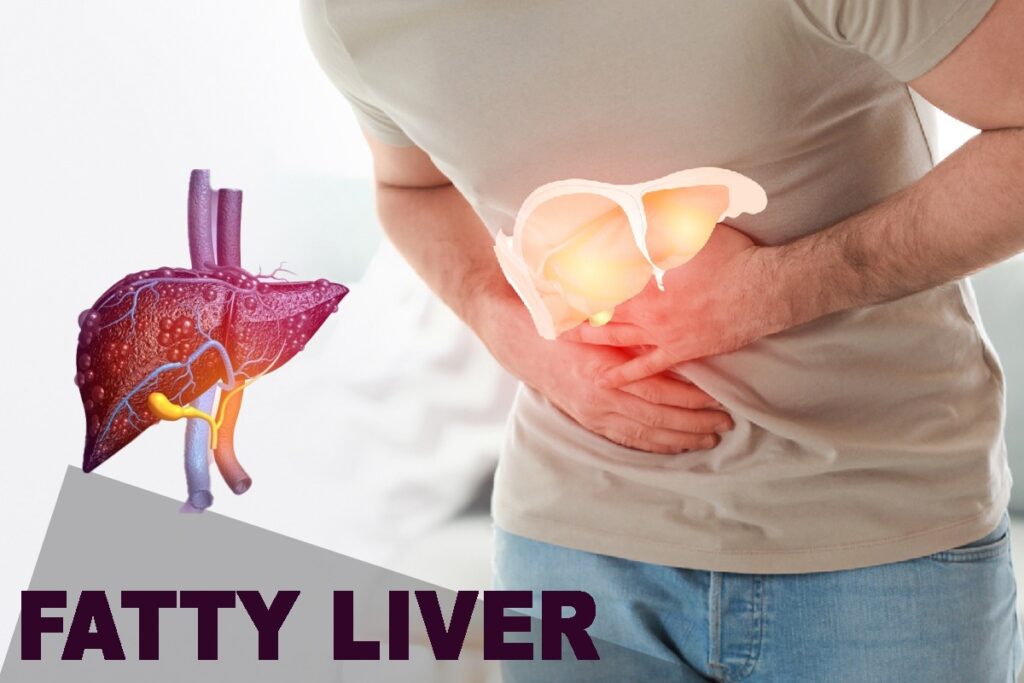Junk Food, and No Exercise—How They’re Causing a Fatty Liver Crisis

Junk Food, and No Exercise—How They’re Causing a Fatty Liver Crisis
Specialists indicate that in most instances, fatty liver can be reversed.
The incidence of fatty liver disease is on the rise in India, particularly among younger individuals. This trend is attributed to lifestyle changes that contribute to the development of the condition. However, specialists indicate that in most instances, fatty liver can be reversed.
Numerous young individuals are discovering they have fatty liver disease, often unintentionally. However, even after receiving this diagnosis, many tend to overlook it until it becomes a more serious issue.
Fatty liver disease is frequently identified incidentally during standard health examinations, with approximately 30-40 percent of the population exhibiting some degree of this condition.
A recent investigation revealed that 80 percent of IT professionals in India are affected by fatty liver, attributed to work-related stress, a lack of physical activity, and unhealthy lifestyle habits.
Additionally, a 2021 meta-analysis encompassing 62 data sets from 50 studies on non-alcoholic fatty liver disease (NAFLD), published in the Journal of Clinical and Experimental Hepatology, indicated that 38 percent of adults in India suffer from NAFLD, with Chandigarh reporting the highest prevalence at 53.5 percent. Among children, the prevalence rate was found to be 35 percent.
Understanding Fatty Liver Disease
Before delving into the complexities of liver disease and the recent surge in cases, it is important to clarify the distinctions between these conditions, as they can often be misunderstood.
Fatty liver disease occurs when there is an abnormal accumulation of fat in the liver. This condition is categorized into two main types: alcoholic fatty liver disease (AFLD) and non-alcoholic fatty liver disease (NAFLD). NAFLD is particularly prevalent among younger individuals, especially those who have metabolic disorders.
Fatty liver is generally not considered highly dangerous; however, it progresses through four distinct stages: simple fatty liver, inflammation (steatohepatitis), fibrosis, and cirrhosis. Early detection allows for the possibility of reversing fatty liver, but once cirrhosis occurs, the damage becomes irreversible.
NAFLD is closely associated with metabolic syndrome, characterized by conditions such as obesity, diabetes, hypertension, and elevated cholesterol levels.
“This is completely because of a major change in lifestyle, which has impacted the health of these youngsters. They are not exercising. The tendency to stay indoors, be on computers, play on iPads, or study indoors has had a major impact. The usual practice of children going out and playing for hours in the fields has really reduced. Having junk food and snacks at midnight while studying, just sitting at computers, and frequently ordering food these habits lead to a high intake of junk food, which is generally not of good quality in terms of nutritional content. These dietary habits, which include more fat, more trans fats, and fewer healthy nutrients,” informs a health expert.
There are additional factors to consider as well. Experts indicate that various elements play a role in the development of fatty liver, with lifestyle choices being a significant influence. Specific genes, including PNPLA3, heighten the risk of developing fatty liver, especially among Asian populations.
The reasons for fatty liver:
- Obesity and metabolic syndrome
- Excessive consumption of sugar and processed foods
- Alcohol intake
- Specific medications and pre-existing conditions such as hepatitis C and autoimmune disorders.
Fatty liver disease is frequently misinterpreted and undervalued. A common misconception is that the absence of symptoms means there is no cause for concern. However, this notion can be perilous. It is essential to dispel this myth and recognize the importance of addressing fatty liver, understanding its progression, and exploring lifestyle modifications that can aid in its reversal.
Identifying whether you have a fatty liver can be challenging, as this condition is often referred to as a “silent disease.” In its initial stages, fatty liver disease may not present any obvious symptoms. However, as the condition advances, certain indicators may suggest liver issues. A nutritionist and diet consultant says some prevalent symptoms to watch for include:
- Ongoing fatigue and weakness
- Discomfort or pain in the upper right side of the abdomen
- Unexplained weight loss
- Abdominal swelling (ascites)
- Jaundice, characterized by yellowing of the skin and eyes in more severe cases and dark urine accompanied by pale stools.
There are several assessments available to evaluate the extent of liver disease:
Liver function tests (LFTs): These tests evaluate the levels of liver enzymes to determine liver health.
Ultrasound or FibroScan: These imaging techniques assist in identifying fat buildup and measuring liver stiffness.
Blood tests (including fasting blood sugar, lipid profile, and HbA1c): These tests help identify risk factors such as insulin resistance and elevated cholesterol levels.
MRI or CT scan: These imaging modalities offer detailed visuals for a more precise diagnosis in more severe cases.
Is it possible to reverse fatty liver disease?
Yes, fatty liver disease can be reversed if identified in its early stages. The condition progresses through four distinct stages: it begins with fatty liver, followed by hepatitis, which involves inflammation, then advances to fibrosis, and ultimately leads to cirrhosis. Once cirrhosis occurs, the damage is usually irreversible.
The following dietary modification and lifestyle changes can help in the reversal of fatty liver.
- Dietary modifications
- Minimize the consumption of junk food and processed items that are high in trans fats.
- Adopt a balanced diet that includes ample proteins, fiber, and healthy fats.
- Limit refined carbohydrates and sugary drinks.
- Enhance the intake of green vegetables and whole grains.
- Maintain proper hydration and steer clear of alcohol.
Physical activity
Participate in a minimum of 30-45 minutes of exercise on five days each week.












